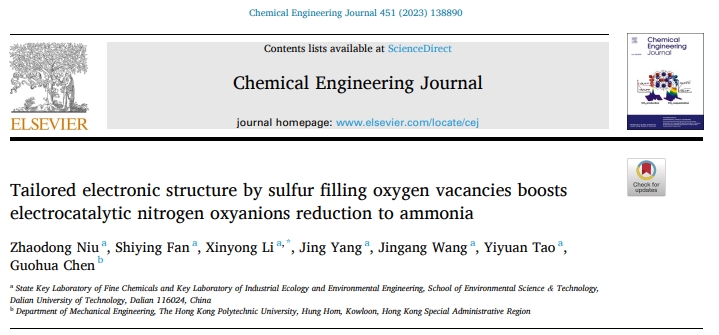

Electrocatalytic reduction of nitrogen oxyanions (NOx− , x =3 and 2) to ammonia (NH3) under ambient conditions is an alternative to the Haber-Bosch process (HBP). Recent catalysts are vulnerable to low-rate and -selectivity NH3 synthesis due to the multi-step electron–proton transfer process and water as a proton donor, especially in neutral media. Herein, we introduce sulfur species into Co3O4 spinel nanosheets (S-Co3O4) inspired by the bio-nitrogenase of metal-sulfur clusters to alleviate the above dilemma. The S5-Co3O4 exhibits an NH3 yield rate of 174.2 mmol h−1 g−1 at − 0.6 V versus reversible hydrogen electrode (RHE) with a Faradaic efficiency of 89.9 %, nitrate (NO3− ) as feedstock. Furthermore, nitrite (NO2−) reduction possesses comparable NH3 Faradaic efficiency (87.6 %) and a higher yield rate (314.5 mmol h−1 g−1) at the same conditions. Theoretical calculations demonstrated that sulfur species reduce the free energy change of formation *H, boosting the activation of *NOx (x = 3 and 2). A two-electrode device, S5-Co3O4 as bifunctional catalysts, demonstrates excellent NH3 Faradaic efficiency (>95 %) over a wide voltage range for NO2− RR, while the anode produces high value-added benzoic acid.